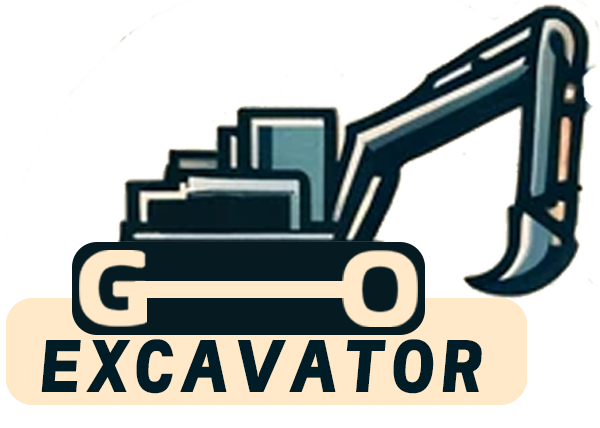
Excavators are powerful and versatile machines that play a crucial role in construction and mining industries. Known for their ability to perform a variety of tasks, these heavy-duty machines are indispensable on many job sites. This article provides an in-depth look at what an excavator is, its key components, and its broad range of applications.
What is an Excavator?
Definition and Overview
An excavator is a type of heavy construction equipment primarily used for digging and moving large amounts of earth. It consists of a boom, dipper (or stick), bucket, and cab mounted on a rotating platform known as the house. The house sits atop an undercarriage with tracks or wheels. Excavators are commonly referred to as diggers, especially in the UK.
Key Components
- Boom: The long arm attached to the house, used to extend the reach of the excavator.
- Dipper (Stick): Attached to the boom, it connects to the bucket and controls its movement.
- Bucket: The tool at the end of the dipper, used for digging, scooping, and moving materials.
- Cab: The enclosed space where the operator sits, containing controls and providing visibility and protection.
- House: The rotating platform that allows the boom and cab to pivot.
- Undercarriage: The base of the excavator, equipped with either tracks or wheels for mobility.
Types of Excavators
Standard Excavators
Standard excavators are the most common type, suitable for a wide range of general construction tasks. They are versatile and come in various sizes, from mini to large excavators.
Mini Excavators
Mini excavators, known as compact excavators, are smaller and more maneuverable, ideal for working in tight spaces or on small-scale projects. They are often used in urban areas and residential construction.
Hydraulic Excavators
Hydraulic excavators use hydraulic fluid to power the movement of the boom, dipper, and bucket. They are known for their precision and efficiency in various tasks.
Long Reach Excavators
These excavators have an extended boom and dipper, allowing them to reach farther than standard models. They are used for tasks such as dredging and demolition.

Applications of Excavators
Construction
- Earthmoving: Excavators are primarily used for digging foundations, trenches, and holes, making them essential in the initial stages of construction projects.
- Demolition: Equipped with specialized attachments like hydraulic breakers and crushers, excavators can efficiently demolish structures.
- Material Handling: Excavators are used to lift and move heavy materials such as pipes, concrete slabs, and steel beams.
Mining
- Extraction: In mining operations, excavators are used to extract minerals, ores, and coal from the earth.
- Overburden Removal: They remove the overlying soil and rock (overburden) to access the mineral deposits below.
Forestry
- Land Clearing: Excavators are used to clear trees, stumps, and brush, preparing the land for agricultural or construction use.
- Logging: With the right attachments, excavators can handle logs, making them useful in the forestry industry.
Agriculture
- Ditch Digging: Excavators are used to dig irrigation ditches and drainage systems in agricultural fields.
- Landscaping: They help in shaping the land, creating terraces, and preparing fields for planting.
Infrastructure Development
- Road Construction: Excavators are essential in road construction projects, used for digging, grading, and placing materials.
- Pipeline Installation: They dig trenches for laying pipelines and assist in the installation process.
Specialized Attachments for Excavators
Buckets
- Standard Buckets: Used for general digging and material handling.
- Grading Buckets: Wider and shallower, used for grading and leveling tasks.
- Rock Buckets: Reinforced for handling heavy, abrasive materials like rock and gravel.
Hydraulic Hammers
These attachments allow excavators to break through concrete, rock, and other hard materials, making them invaluable in demolition and mining applications.
Grapples
Grapples are claw-like attachments used for picking up and handling large, irregular objects like logs, debris, and scrap metal.
Augers
Augers are used for drilling holes in the ground, useful in tasks like installing posts, poles, and foundation piers.

Advantages of Using Excavators
Versatility
One of the main advantages of excavators is their versatility. With a wide range of attachments, they can perform various tasks beyond just digging.
Efficiency
Excavators are highly efficient, capable of completing tasks quickly and accurately, which helps in meeting project deadlines and reducing labor costs.
Precision
Modern excavators are equipped with advanced technology, such as GPS and laser guidance systems, allowing for precise control and increased productivity.
Excavators are indispensable machines in various industries, including construction, mining, forestry, agriculture, and infrastructure development. Their versatility, efficiency, and ability to handle a wide range of tasks make them a vital part of any large-scale project. By understanding the different types of excavators and their specific applications, businesses can choose the right equipment to meet their needs and enhance their operational capabilities.
FAQ
What is the primary use of an excavator?
- The primary use of an excavator is for digging and moving large amounts of earth, but they are used for demolition, material handling, and other tasks.
Can excavators be used for residential projects?
- Yes, mini or compact excavators are often used for residential projects due to their maneuverability and suitability for smaller spaces.
What factors should be considered when choosing an excavator?
- Consider the size and scope of the project, the type of material to be handled, the specific tasks to be performed, and the available attachments.
A Comprehensive Guide to Buying a Excavator Second Hand
Purchasing a second-hand excavator can be a cost-effective solution for your construction or landscaping needs. However, buying used machinery comes with its own set of challenges and considerations. This comprehensive guide will walk you through [...]
Comprehensive Guide to Hyundai Mini Excavators: Features and Prices
Mini excavators have become indispensable tools in the construction and landscaping industries. Hyundai Construction Equipment, a global leader in heavy machinery, offers a range of mini excavators known for their reliability, efficiency, and advanced features. [...]
How to Extend the Service Life of Excavator Parts
Excavators are indispensable machines in the construction and mining industries. They perform heavy-duty tasks that demand robust components and meticulous maintenance. Extending the service life of excavator parts not only reduces operational costs but enhances [...]
Kymron Excavators: Innovative, Sustainable Construction Machinery
In the dynamic world of construction and heavy machinery, Kymron has emerged as a game-changer. Specializing in advanced excavator technology, Kymron is redefining industry standards with its commitment to innovation, efficiency, and sustainability. Company Overview [...]
Bulldozer vs. Wheeled Excavator: Which Machine is Better for Moving Soil?
Moving soil is a fundamental task in construction, landscaping, and earthmoving projects. Choosing the right machinery for the job can significantly impact efficiency, cost, and project timelines. Two of the most commonly used machines for [...]
Why Are Small Excavators Favored? A Comprehensive Guide
In the world of construction and landscaping, efficiency and versatility are key. Among the myriad of machinery available, small excavators have risen in popularity. But what makes them so favored? Introduction to Small Excavators Small [...]




